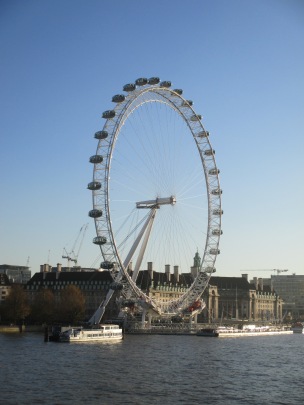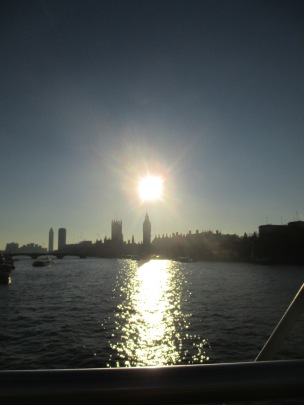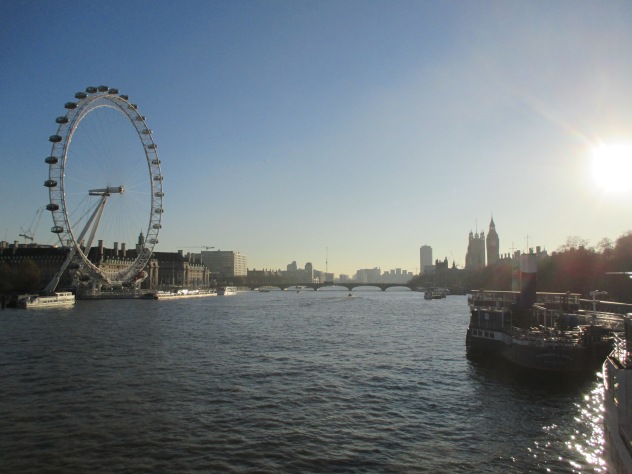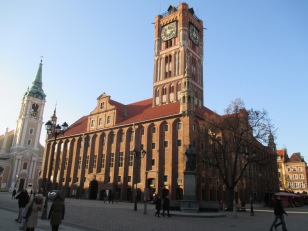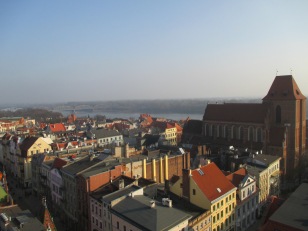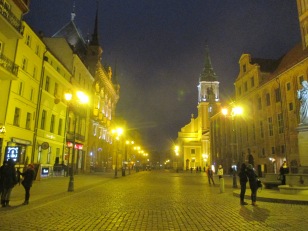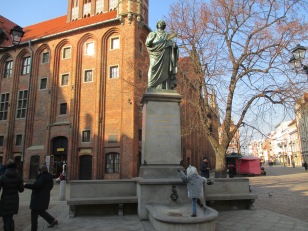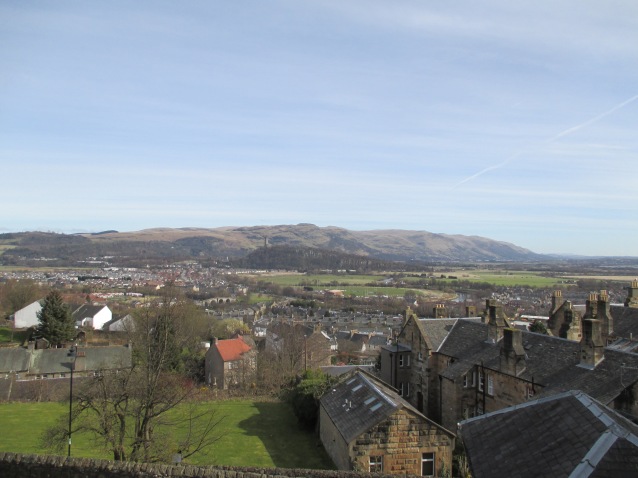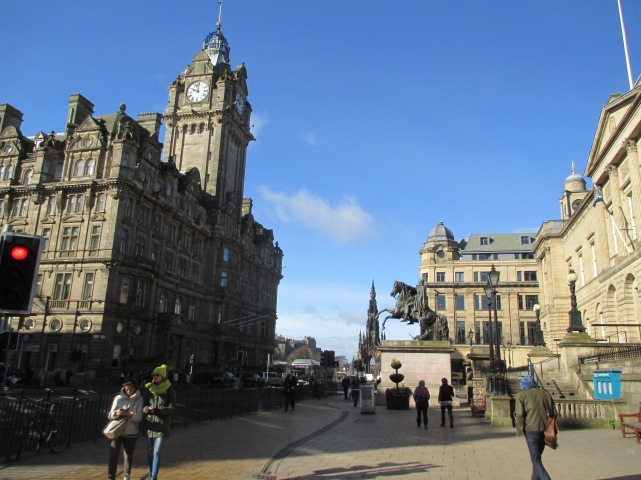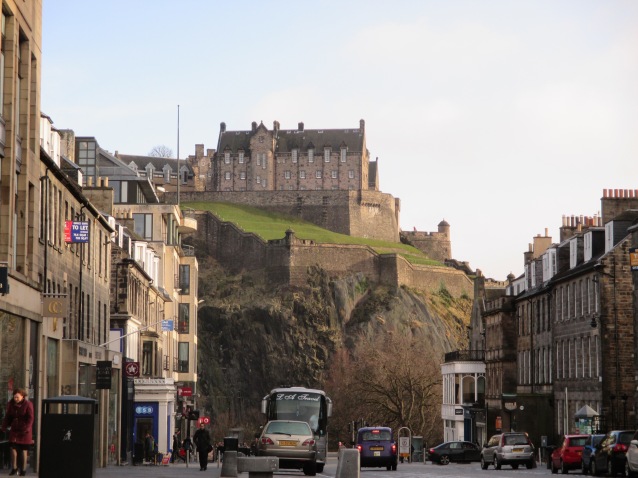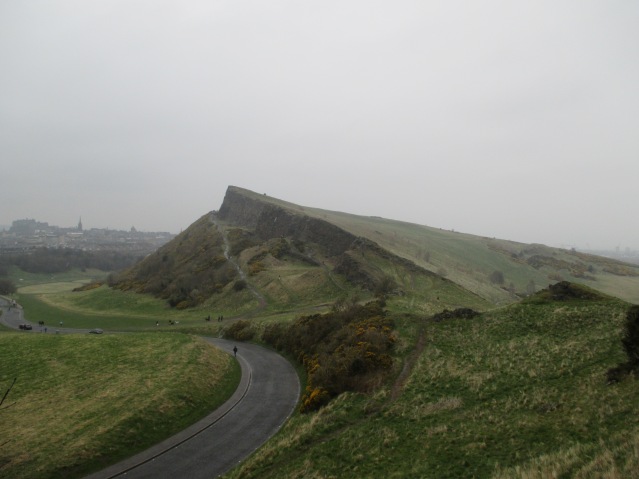
The picture might convince you into thinking that, on our final day in Edinburgh, my boyfriend and I took a trip far into the misty Scottish wilderness, miles from any civilisation. In fact, the picture was taken in Edinburgh. The formation in the photo is Salisbury crags, and behind us stood the imposing shadow of Arthur’s Seat, the extinct volcano that we were going to reach the summit of.
At least, that was our plan for the day. Leaving the guesthouse in the morning, saying a sad farewell to our cosy little bedroom and all the free tea that came with it (I mean, there was free coffee too, but tea > coffee in basically every situation ever), we headed over the bridge and back to the Royal Mile. Starting from close to the top, we walked downhill all the way to the bottom of the Mile; as we did so the street became narrower and the shops even quainter than they were at the top; more cosy now than simply touristy, though still seemingly full of enough cashmere to cover the entire of Scotland in a giant blanket.
At the bottom of the gently sloping street we came across a rather curious building. I’m struggling to find the words to accurately describe it, to be perfectly honest. It was white; I can tell you that much. At least, most of it was white. There were some random sections clad in steel, wood, and even little bits of stone. It was big; that was for certain. But whatever it was, it was the Scottish Parliament building, and whilst I wouldn’t call it grand in the conventional sense, it was certainly impressive. If you told a Victorian era architect to design something with the name ‘futuristic and goddamn weird,’ I suppose he might have come up with something like that.
Almost directly opposite the Scottish Parliament is the far more traditional and, to me, far more aesthetically appealing Palace of Holyroodhouse. One of the Queen’s many holiday homes for when Buckingham Palace becomes a little boring, Holyrood is a magnificent, turreted building of brown stone. Sadly, the day we showed up at Holyrood was one of approximately three days in the whole year when it was closed to the public, but, undeterred, we headed into the sprawling, rocky wilderness of Holyrood Park that lay beyond.
Arthur’s Seat loomed above us, dark against the grey sky, its summit steep and windswept. Somehow I couldn’t quite believe that website I found on Google that told me we’d reach the top in fifteen minutes. But, seeing the people walking up the sides of the dark Salisbury Crags, we figured we may as well give it a try.
We walked in the shadow of Salisbury Crags for half an hour or so, but by the time we got to the foot of Arthur’s Seat, we were essentially back at ground level and, whilst the rocky walk had been enjoyable, it was not what we had set out to do. I checked the map, and checked it again, but I couldn’t actually work out where the path up the mountain was located. Some diminutive dots could be seen two thirds of the way up, hiking up a rocky outcrop that from our position far below looked far too steep for my jeans and Converse shoes attire.
It was at approximately that moment that a thin but persistent blanket of rain began to fall. Remembering back to the first day, I assumed it would have disappeared in five minutes. Looking at the thick clouds rolling in off the distant hills, however, I had to concede that this might not be true today. Scottish weather had finally caught up with us. Abandoning the hike up the hill, we turned inwards, to the centre of the park, taking the scenic but flat route back to the north and the rest of the city centre. Despite the persistent rain, which only grew heavier, it was actually a very pleasant walk. We were surrounded by more greenery than I’d seen in months of living in London, and hardly a person passed us by. Those who did looked like hardened walkers, dressed in raincoats and wellies, and I felt almost comically out of place. But we made it back to the odd Parliament building without either of us slipping over in the mud and therefore, despite not making it to the summit, I firmly consider the walk a success.
The first task of the afternoon was to find somewhere to warm up. I had in mind a small tearoom with carpets and cushioned seats, where the tea arrived in flowery teapots and a generous slice of cake came with it. Alas, we could find no such thing, so we settled for a small Spanish-themed cafe which was brightly coloured but otherwise largely charmless. We got the tea at least, but not in flowery teapots. In fact, the water tasted funny too.
After changing my shoes (my Converses were soaked through and my boyfriend had been kind enough to carry around my boots in his rucksack all day), we departed for an afternoon walk and a trip to the National Museum of Scotland, plus some well-deserved souvenir shopping. The museum was enjoyable but for the fact that it closed at five pm, and consequently we were given less than an hour to see it all. The dinosaurs, therefore, simply had to be the first port of call.
After the Museum and another late afternoon walk, in which time we managed to stuff more sweet souvenirs into our already overfilled rucksack, we headed for a restaurant that I had found by luck online. It was good that I had found it in advance; I struggled to locate it even once we were on the right street. It was in the basement of a small hotel, almost entirely unnoticeable, which is a shame as I consider it to be the best meal we had all holiday. We were the only customers for the first half of our meal; as a result we got a friendly greeting from the one waiter/barman as well as the chef. My Indian curry was big enough to fill me up for two meals, and my boyfriend’s fish and chips portion was bigger still.
Considering the coach home didn’t leave until eleven, we sat in the restaurant for longer than was perhaps necessary before going to pick up our bags and making our way to our final destination of Edinburgh Coach Station. It was sad to be leaving; I can say that much for certain. Despite being cold and soaking wet, I would have gladly stayed.
